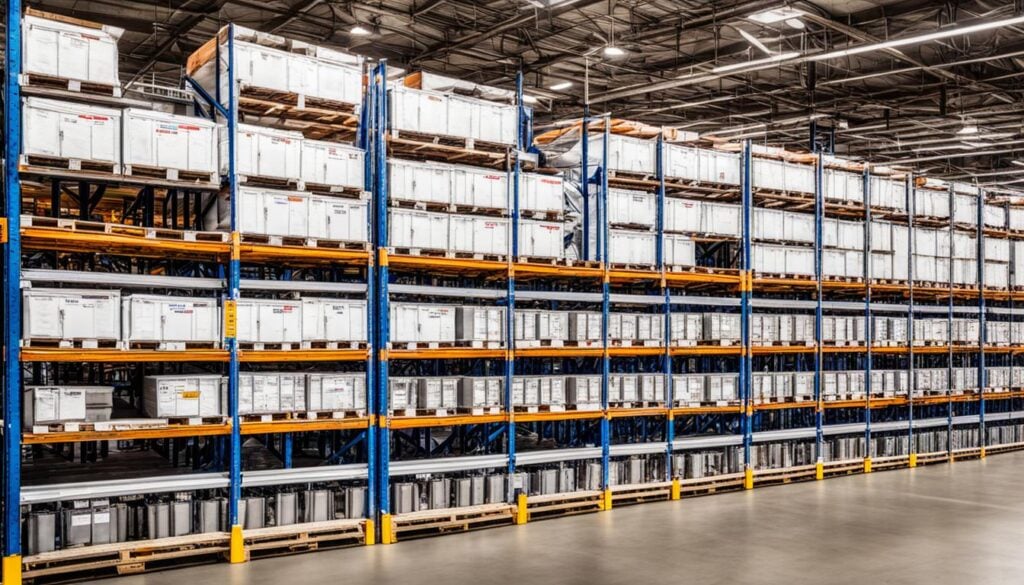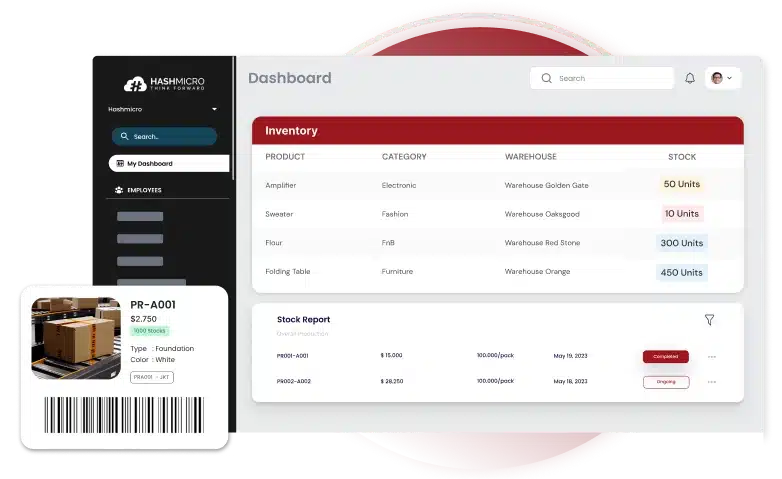In this article, we will delve into the key aspects of FIFO and provide valuable insights on how implementing this inventory management method can maximize efficiency and boost profitability for your business.
So, what exactly is the FIFO method? Put simply, FIFO is an inventory control method that ensures the first items to enter the warehouse are the first to leave. By following this principle, businesses can effectively manage their inventory, reduce waste, and optimize operations.
Throughout this guide, we will explore the various facets of the FIFO method, including its definition, workings, and benefits. We will also compare FIFO with other inventory management methods such as LIFO and the average cost method, and discuss the advantages and disadvantages of utilizing FIFO in warehouse management.
Implementing the FIFO method in your warehouse operations can lead to higher inventory valuation, streamlined processes, and maximized warehouse space. It enables your business to prioritize the usage of older inventory, minimize waste, and ensure that products are sold or used before they become obsolete.
Ready to embark on a journey to enhanced efficiency and profitability through the implementation of the FIFO method? Let’s dive right in!
Key Takeaways
|
Table of Content:
Table of Content
Understanding the FIFO Method
The First In, First Out (FIFO) method is an essential concept in warehousing and inventory management. It is a widely used inventory valuation method that ensures the products received first are the ones sold or used first. This sequential approach reflects the actual inventory movement in a warehouse, guaranteeing that the oldest items in stock are utilized before newer ones.
Implementing the FIFO method is particularly beneficial in industries where products have expiration dates or risk obsolescence. By prioritizing the usage or sale of older items, businesses can reduce the likelihood of spoilage or loss due to outdated inventory. This method also helps optimize inventory turnover and minimize the accumulation of obsolete items, promoting efficient warehouse management.
Comparative Analysis of FIFO, LIFO, and Average Cost Inventory Methods
When it comes to choosing the most suitable approach for warehouse management, a comparative analysis of the FIFO, LIFO, and average cost inventory methods can provide valuable insights. Each method offers its own unique advantages and disadvantages that businesses need to consider in order to make an informed decision.
FIFO (First In, First Out): This method ensures that the oldest items are sold or used first. It follows the logic that the items that enter the warehouse first should be the ones to leave. FIFO is particularly suitable for industries where products have expiration dates or risk obsolescence. By utilizing the FIFO method, businesses can minimize the risk of inventory obsolescence and ensure that products are sold or used before they become outdated.
LIFO (Last In, First Out): In contrast to FIFO, the LIFO method assumes that the latest items received are the first to be sold or used. This method can be advantageous during times of inflation, as it can result in a lower cost of goods sold (COGS) and potentially lower tax liabilities. However, it may not accurately reflect the actual order in which inventory is utilized, and it can lead to inventory valuation distortions.
Average Cost Method: This method calculates the cost of products by averaging the costs of all units in inventory. It does not consider the purchase date of individual units. The average cost method is relatively simple to implement and can provide a consistent valuation of inventory. However, it may not accurately reflect actual inventory movement, especially if prices vary significantly over time.
When analyzing these inventory methods, businesses need to consider various factors such as cost-effectiveness, tax implications, and the nature of their products. FIFO allows for accurate tracking of inventory movement and ensures that older items are utilized first. On the other hand, LIFO may be advantageous in specific economic circumstances. The average cost method provides consistency but may not accurately reflect the actual flow of inventory.
To further illustrate the differences between these inventory methods, refer to the comparative analysis table below:
| Method | Advantages | Disadvantages |
|---|---|---|
| FIFO | Accurate inventory tracking minimizes inventory obsolescence | Potentially higher COGS, may not reflect the actual flow of inventory in certain industries |
| LIFO | Potentially lower COGS during inflation, lower tax liabilities | Potential inventory valuation distortions, may not reflect the actual flow of inventory |
| Average Cost Method | Consistent valuation of inventory | May not reflect the actual flow of inventory, especially in price-volatile industries |
By conducting a comparative analysis of the FIFO, LIFO, and average cost inventory methods, businesses can gain valuable insights into which approach aligns best with their specific warehouse management needs.
Benefits of Implementing FIFO in Warehousing
Implementing the FIFO (First In, First Out) method in warehouse management provides numerous advantages that can significantly enhance your operations and boost profitability. By prioritizing the sale and use of the oldest items first, FIFO offers benefits such as higher inventory valuation, streamlined processes, and maximized warehouse space.
Higher Inventory Valuation
One of the key benefits of implementing FIFO is the ability to achieve higher inventory valuation. By selling or using the oldest items in stock first, FIFO ensures that potentially lower-cost items are consumed before newer, potentially higher-cost items. This methodology more accurately reflects the actual cost of goods sold, leading to increased inventory valuation.
Streamlining Processes
FIFO also offers significant advantages in streamlining warehouse processes. The method ensures efficient handling of inventory by following a sequential pattern, reducing the risk of product obsolescence. By prioritizing the utilization of older items, warehouse operations become more organized and systematic, allowing for smoother workflows and improved productivity.
Maximizing Warehouse Space
Another benefit of implementing FIFO is the ability to maximize warehouse space. By optimizing inventory flow and following a systematic pattern of product usage, FIFO helps minimize the storage of obsolete items. This frees up valuable space within the warehouse, enabling businesses to make better use of available square footage and improve overall storage capacity.
To illustrate the benefits visually, consider the following infographic:
Implementing FIFO in Warehouse Operations
Implementing the FIFO method in warehouse operations can significantly improve efficiency and maximize the utilization of inventory. However, it requires careful planning and execution to ensure a seamless transition. This section will provide a step-by-step guide on how to implement FIFO in your warehouse, along with important considerations for optimizing the implementation.
1. Assess Your Warehouse Layout:
Before implementing FIFO, evaluate your warehouse layout to identify areas that may need modification. Consider factors such as the flow of goods, accessibility, and space utilization. This assessment will help you determine the best approach for implementing FIFO in your specific warehouse environment.
2. Organize Products:
To implement FIFO successfully, you need to organize your inventory properly. Categorize products based on their arrival dates and establish clear storage locations for each category. Clearly label shelves or racks to ensure easy identification and retrieval of the oldest items.
3. Train Staff:
Proper training is crucial for the successful implementation of FIFO. Educate your warehouse staff on the importance of FIFO and provide them with detailed instructions on how to follow the method effectively. Emphasize the significance of accurate inventory tracking and ensure that all staff members understand their roles and responsibilities in maintaining FIFO.
Additionally, utilizing barcode tracking software can streamline inventory management by enabling staff to accurately track items, ensure proper adherence to the FIFO principle, and minimize human errors in record-keeping.
4. Consider FIFO Pallet Racking Systems:
To streamline the FIFO process, consider using FIFO pallet racking systems. These systems are designed to automatically move and rotate pallets based on the FIFO principle. They ensure that the oldest items are always accessible first, eliminating the need for manual sorting and reducing the risk of errors.
5. Leverage AS/RS Technology:
Automated storage and retrieval systems (AS/RS) can greatly enhance the implementation of FIFO. These systems use advanced robotics and software to efficiently store, locate, and retrieve inventory. They can be programmed to follow the FIFO method accurately, ensuring optimal inventory flow and minimizing human errors.
Implementing FIFO in warehouse operations requires strategic planning and meticulous execution. By following this step-by-step guide and considering the use of FIFO pallet racking systems and AS/RS technology, you can optimize your inventory flow, minimize waste, and enhance overall warehouse efficiency.
Overcoming Challenges in FIFO Implementation
Implementing the FIFO method in warehouse management may present challenges that need to be addressed for a successful implementation. One common challenge is the resistance to change from employees accustomed to other inventory management methods.
To overcome this, it is crucial to provide comprehensive training and communication to ensure a clear understanding of the benefits and importance of FIFO. By involving employees in the transition process and emphasizing the positive impact on efficiency and profitability, their acceptance and cooperation can be gained.
Another challenge lies in the complexity of inventory tracking and ensuring accurate FIFO implementation. This is where technology and automation play vital roles. Adopting a warehouse management system (WMS) or inventory management software (IMS) can simplify FIFO adoption by automating inventory tracking, facilitating real-time data analysis, and generating accurate FIFO reports. These tools help streamline processes, reduce human error, and ensure the proper rotation of goods according to the FIFO principle.
FIFO implementation also poses challenges related to warehouse layout and storage systems. Proper organizing and labeling of inventory, along with the use of FIFO-friendly storage systems like pallet racking and automated storage and retrieval systems (AS/RS), can enhance inventory flow and contribute to effective FIFO implementation.
By optimizing the physical storage layout and implementing automated solutions, businesses can reduce the risk of product spoilage, minimize storage costs, and maximize warehouse space utilization.
Conclusion

Implementing the FIFO method in warehouse management system may encounter challenges, but they can be overcome through comprehensive training, effective communication, and the utilization of technology and automation. By addressing these challenges, businesses can simplify FIFO adoption, streamline processes, and ensure accurate and efficient inventory rotation. Overcoming the initial hurdles will pave the way for improved efficiency, maximized profitability, and enhanced customer satisfaction in warehouse operations.



































